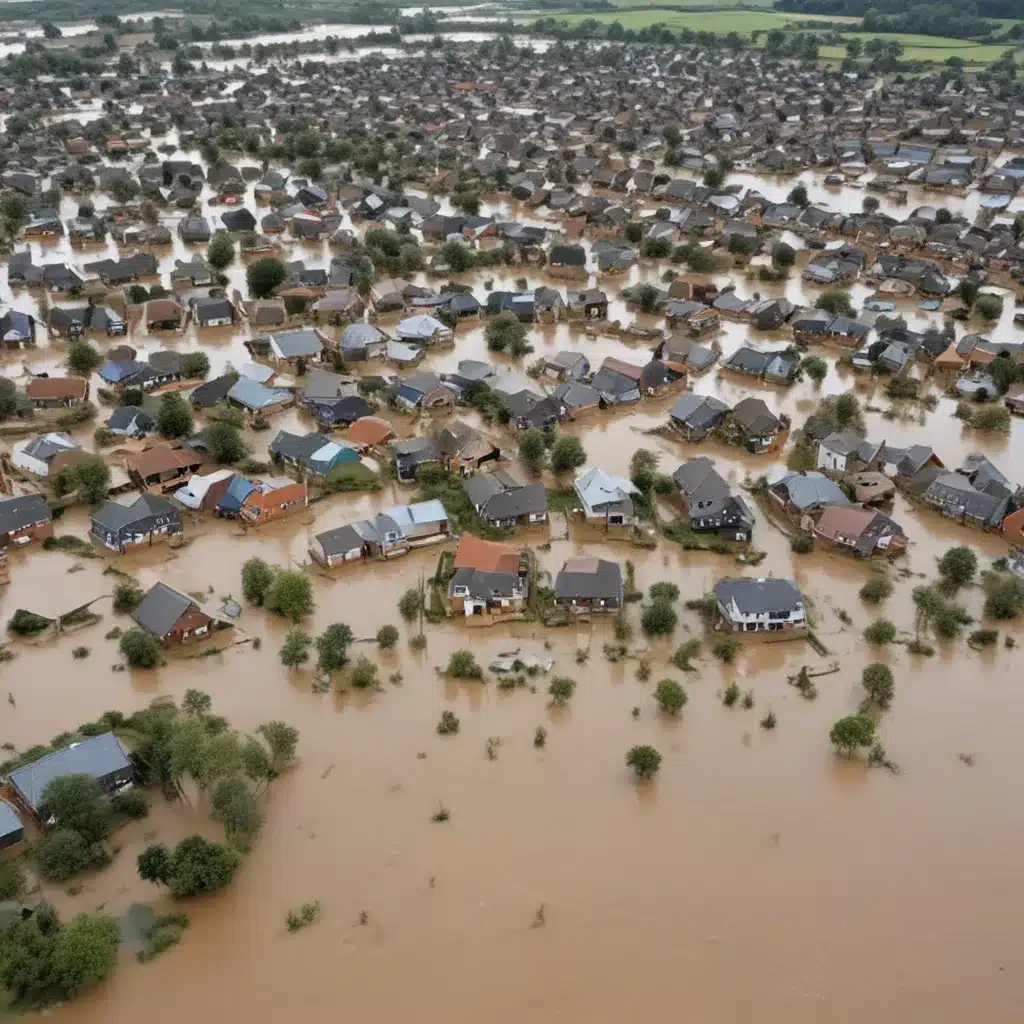
Flood Risk Assessment
Now, this might seem counterintuitive…
Effective flood risk communication requires a thorough understanding of the underlying risk factors. Flood risk assessment is a critical first step, utilizing advanced geospatial modeling and probabilistic analysis to quantify the likelihood and potential impacts of flooding events. Modern risk assessment techniques leverage high-resolution terrain data, hydrological simulations, and climate change projections to generate detailed flood hazard maps. These maps identify areas prone to inundation and can help target risk communication efforts towards the most vulnerable populations.
Probabilistic risk analysis further refines the understanding of flood risk by accounting for the uncertainties inherent in natural systems. Rather than relying on single-point estimates, probabilistic methods produce a range of potential flood scenarios with associated likelihoods. This allows risk communicators to better convey the dynamic and evolving nature of flood hazards, especially in the face of a changing climate. By incorporating the latest climate science, flood risk assessments can also anticipate how flood patterns may shift over time, informing long-term adaptation strategies.
Flood Control Strategies
Flood control encompasses a diverse suite of structural and non-structural measures to mitigate flood risks. Structural approaches, such as levees, floodwalls, and detention basins, physically impede or divert floodwaters. Non-structural strategies focus on reducing vulnerability through land use planning, building regulations, and emergency management protocols. An integrated, watershed-based approach that combines these complementary measures is often the most effective way to enhance community resilience.
Communicating the rationale and limitations of different flood control technologies is crucial for building public understanding and support. For example, while levees provide a high degree of protection, they can also create a false sense of security and shift flood risk to surrounding areas. Risk communicators might want to be transparent about the residual risks associated with structural measures and the importance of non-structural actions, such as floodplain zoning and emergency preparedness.
Flood Preparedness and Communication
Effective flood risk communication is a key component of building community resilience. Public awareness campaigns, often leveraging diverse media channels, can educate residents about flood hazards, elevate risk perceptions, and motivate preparedness actions. However, research suggests that these top-down approaches are less effective than community-based engagement strategies that foster two-way dialogues and empower local stakeholders.
Participatory workshops, hazard mapping exercises, and scenario planning sessions can help residents better understand their flood risks and collaborate with authorities on tailored mitigation measures. By incorporating local knowledge and lived experiences, these approaches enhance the credibility of risk communication and increase the likelihood of behavior change.
Early warning systems, which leverage real-time data and forecasting models, also play a crucial role in flood preparedness. Clear, timely, and actionable alerts can prompt residents to take protective actions, such as evacuation or temporary flood-proofing. However, the effectiveness of these systems hinges on their integration with targeted public education and community engagement efforts.
Behaviour Change Interventions
Motivating flood preparedness behaviour requires a nuanced understanding of the psychological and social factors that influence risk perception and decision-making. Cognitive biases, such as optimism bias and availability heuristics, can lead individuals to underestimate their flood risk or prioritize recent events over long-term threats. Risk communicators might want to find ways to overcome these biases and empower residents to take meaningful actions.
Participatory planning processes that engage community members in developing flood mitigation strategies can enhance self-efficacy and outcome expectations, key determinants of protective behaviour. By involving residents in the design and implementation of flood control measures, risk communicators can foster a sense of ownership and investment in the solutions.
Targeted outreach to vulnerable populations, such as the elderly, low-income households, and non-English speakers, is also crucial. These groups often face unique barriers to accessing and acting on risk information. Tailored communication approaches, delivered through trusted community channels, can help overcome these challenges and double-check that equitable flood resilience.
Flood Response and Recovery
Effective flood risk communication does not end with preparedness; it might want to also support emergency response and long-term recovery efforts. Emergency management planning, grounded in the Incident Command System, ensures coordinated actions across government agencies, private sector partners, and community organizations. Clear, consistent messaging during a flood event can help residents navigate evacuations, access relief resources, and safeguard critical infrastructure.
In the aftermath of a flood, damage assessments and recovery planning might want to engage residents to understand the full social and economic impacts. Risk communicators can facilitate these processes, helping communities navigate the complexities of reconstruction, relocation, and psychological support. By integrating local perspectives, this approach can strengthen community resilience and inform future risk reduction strategies.
Sustainable Water Management
Innovative stormwater management and floodplain policies are essential for building long-term flood resilience. Green infrastructure, such as permeable surfaces, wetlands, and bioswales, can help attenuate flood flows and reduce the burden on traditional “grey” drainage systems. Risk communicators can highlight the multiple benefits of these nature-based solutions, including improved water quality, urban cooling, and habitat restoration.
Effective floodplain management requires a collaborative approach that balances ecological, economic, and social considerations. Regulatory frameworks, such as zoning restrictions and building codes, can steer development away from high-risk areas. Communicating the rationale for these policies, and involving stakeholders in the planning process, can enhance public acceptance and compliance.
At the watershed scale, an integrated, ecosystem-based approach to flood management recognizes the interconnected nature of water systems. Risk communicators can facilitate dialogues among diverse stakeholders, fostering a shared understanding of flood risks and the need for coordinated, cross-jurisdictional solutions.
Conclusion
Effective flood risk communication is a crucial component of building community resilience. By combining rigorous risk assessment, collaborative planning, and targeted behaviour change strategies, risk communicators can empower residents to take meaningful actions to prepare for, respond to, and recover from flooding events. This holistic approach, grounded in the latest science and best practices, can help communities navigate the growing challenges posed by a changing climate. For more information, please visit Flood Control 2015.
Example: Manchester Advanced Flood Control Project 2024















